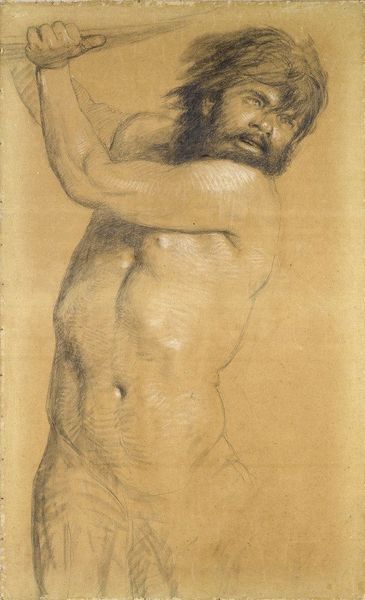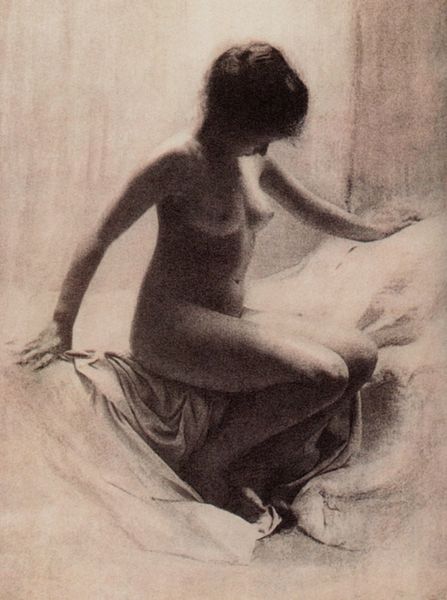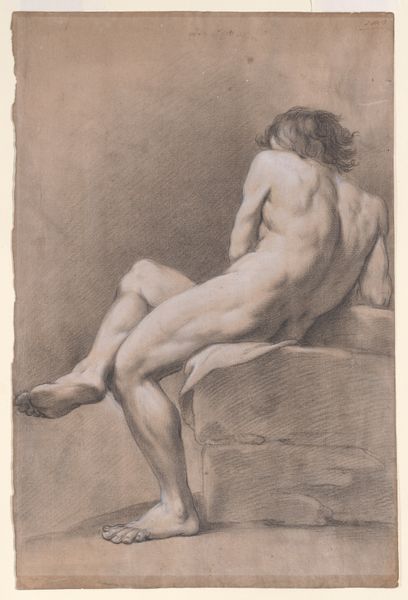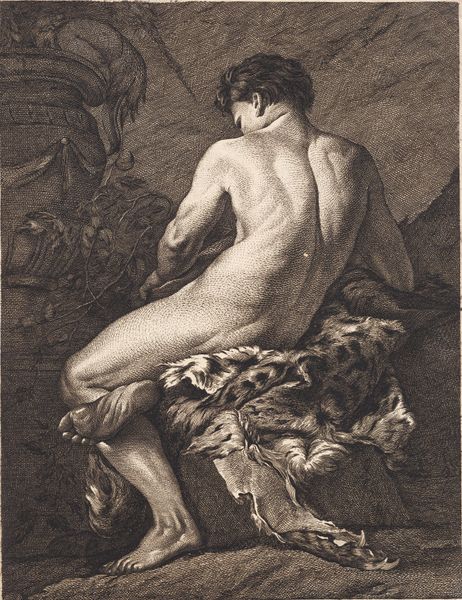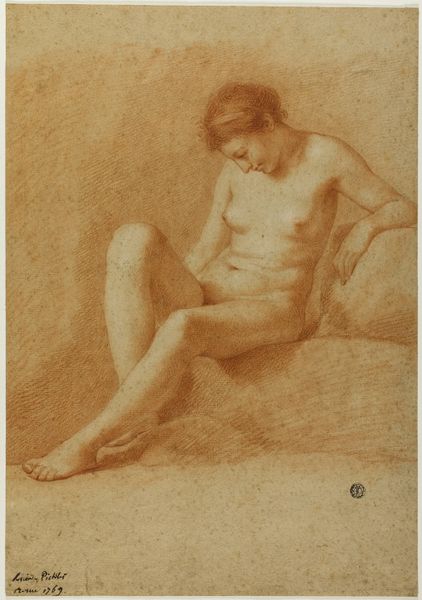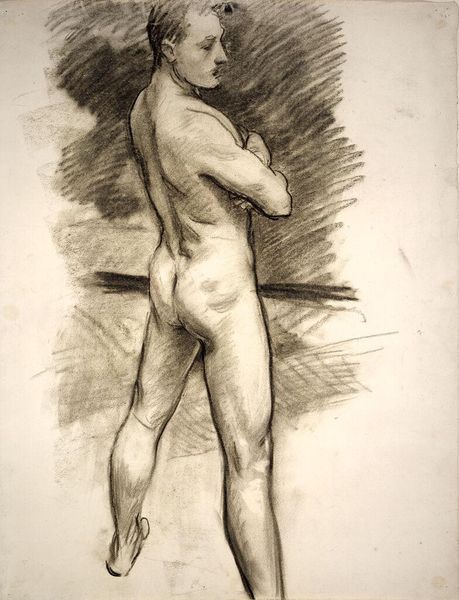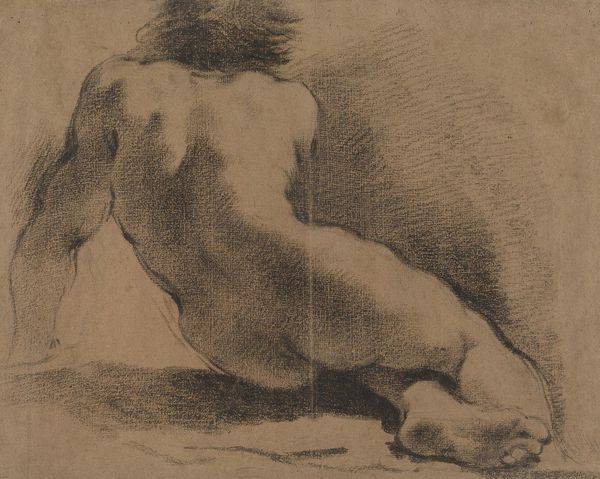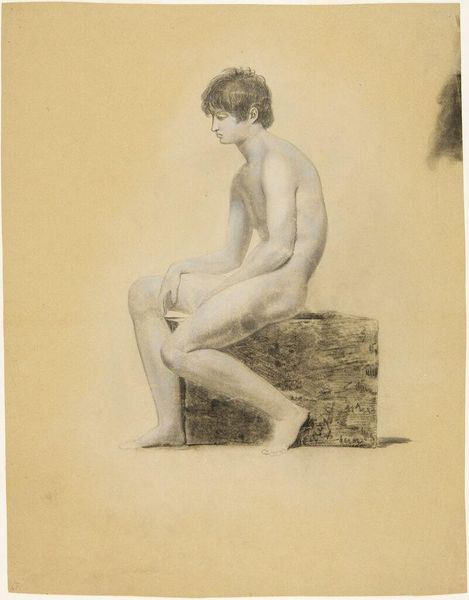
drawing, charcoal
#
drawing
#
impressionism
#
charcoal drawing
#
charcoal
#
academic-art
#
nude
Copyright: Public Domain: Artvee
Curator: We’re looking at Georges Seurat's 1883 charcoal drawing, "Seated Nude; Study for ‘Une Baignade.’" Editor: Immediately striking is the textured surface – almost granular, a tactile impression even through the glass. A very subtle contrast; melancholic almost. Curator: Indeed, the overall tonality contributes significantly. Consider how Seurat builds form, using a calculated application of dark and light to define volume. Observe the contour, dissolving into shadow; see how he coaxes dimension using the weave of mark-making. Editor: But beyond just dimension, think about the act of making. Seurat, laboring meticulously. It’s hardly the fleeting moment of Impressionism we often associate him with, is it? He's creating atmosphere as much as capturing light. Charcoal feels intrinsically connected to industry – the industrial age rendering human form into atmospheric grays. Curator: Intriguing. While I agree the labor is apparent, I see also a distillation. He refines the observed reality through this method of tonal control, edging towards a form of idealized structure beneath what appears fleeting and natural. Consider his later Pointillist technique - this foreshadows that control of optical mixing through the organization of the picture plane. Editor: Even within these muted tones, Seurat is very consciously, selectively, highlighting specific portions of the figure to bring forward—those careful contrasts emphasize his interest. You start to ponder the economics of art making at that time - how easily available were pastels compared to charcoal for the everyday artist, how would his choice of medium affect the cost or value? Curator: Interesting questions. Perhaps one aspect is Seurat's project to merge elements of Impressionism, like capturing fleeting effects of light, with more academically rigorous approaches to form. Editor: I see both intentions very clearly here. Considering its title references a bathing scene, this could easily represent someone taking a hard-earned rest. These figures are real people. The context that informs Seurat’s artwork is compelling—I see something distinctly more honest than academic grand narratives of the time. Curator: I hadn’t considered the working class bather narrative before, fascinating. It encourages an interesting tension of social critique alongside purely formal considerations of light and shadow. Editor: Yes, for me this opens the work up to new perspectives. The value added when labor is the underlying consideration. Curator: Thank you, a rich point to end our consideration. Editor: A fresh point of view to be sure.
Comments
No comments
Be the first to comment and join the conversation on the ultimate creative platform.



